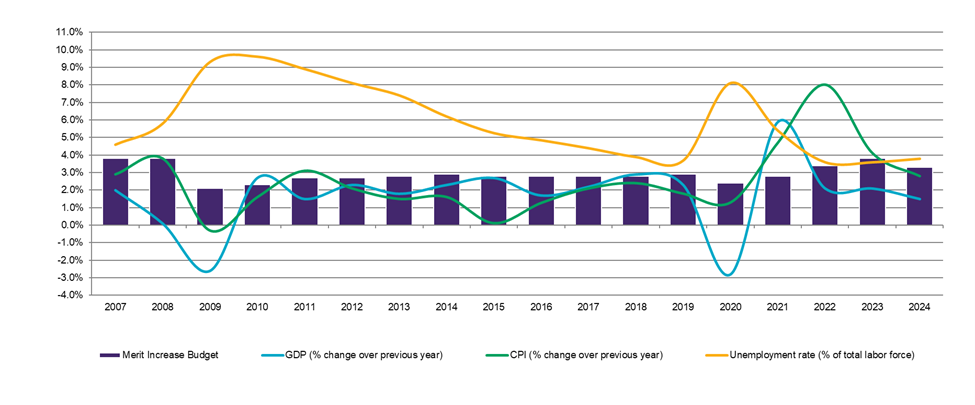Salaries are Down, but STEM is Steady!

May 9, 2024 – Stemta Corporation
The latest data reveals that 2024 pay raises are not meeting the earlier projections made by employers in fall 2023, suggesting a downward trend in pay raises following several years of significant growth.
According to new findings from Mercer, U.S. employers reported that the average annual 2024 pay raises budgets rose by 3.3 percent, with total salary increase budgets increasing by 3.6 percent. These figures are slightly lower than the projections made in November 2023, which anticipated 3.5 percent and 3.8 percent increases, respectively. Mercer surveyed over 1,000 organizations in March to gather this data.
Total salary increase budgets encompass merit awards and other forms of compensation that impact base pay, including promotional increases, cost-of-living adjustments, and minimum wage increases.
Lauren Mason, Mercer’s U.S. Workforce Solutions and Innovation Leader, noted, “Amidst a stabilizing labor market, employers are witnessing a welcome relief on wage pressures as compensation budgets inch closer to pre-pandemic norms.”
In addition to fewer 2024 pay raises, employers are also granting fewer job promotions in 2024 compared to the previous year. On average, 8 percent of all employees are being promoted or are slated for promotion, down from the 9.3 percent projected in November 2023.
2024 pay raises vary notably across industries. Sectors like transportation equipment (3.9 percent), nonfinancial services (3.6 percent), mining and metals (3.6 percent), consumer goods (3.6 percent), and chemicals (3.6 percent) are providing merit increase budgets exceeding the national average of 3.3 percent. Conversely, health care services, retail, wholesale, and the tech sector are lagging behind, with merit increase budgets at 2.9 percent and 3 percent, respectively.
2024 pay raises are a lagging indicator

STEM Job Salary Results and Expectations:
The Bureau of Labor Statistics forecasts a nearly 10% increase in STEM jobs between 2019 and 2029, a rate twice that of all other occupations (BLS, 2021). With society’s growing dependence on technology, there is a rising demand for skilled professionals in engineering, computer science, and healthcare. While a STEM degree can offer numerous opportunities, it’s crucial to recognize that not all STEM careers offer the same prospects.
In STEM fields, salary trends and expectations for 2024 often differ due to high demand for specialized skills. According to recent reports:
- Engineering: The median salary for engineers in the U.S. ranges from $80,000 to over $100,000, depending on experience and specialization. Employers in industries like aerospace and technology are offering competitive salary packages, with annual increases averaging around 4.2 percent.
- Technology: Professionals in technology-related roles, such as software development and data analysis, are experiencing steady salary growth. Entry-level positions typically start around $60,000, while senior roles can exceed $150,000 annually. Salary increase budgets for tech companies average around 3.7 percent.
- Mathematics and Statistics: Statisticians and mathematicians command salaries ranging from $70,000 to $130,000, with merit increase budgets around 3.4 percent. Finance and insurance industries offer some of the highest salary packages for these roles.
Overall, STEM job seekers remain optimistic about salary expectations, with many anticipating competitive compensation packages to reflect their skills and the ongoing demand for talent in these fields. Employers looking to attract and retain top STEM talent should remain cognizant of these salary trends and adjust compensation strategies accordingly.
Please check out the Stemta STEM Career Guide for more info on STEM Jobs and Salaries




Responses